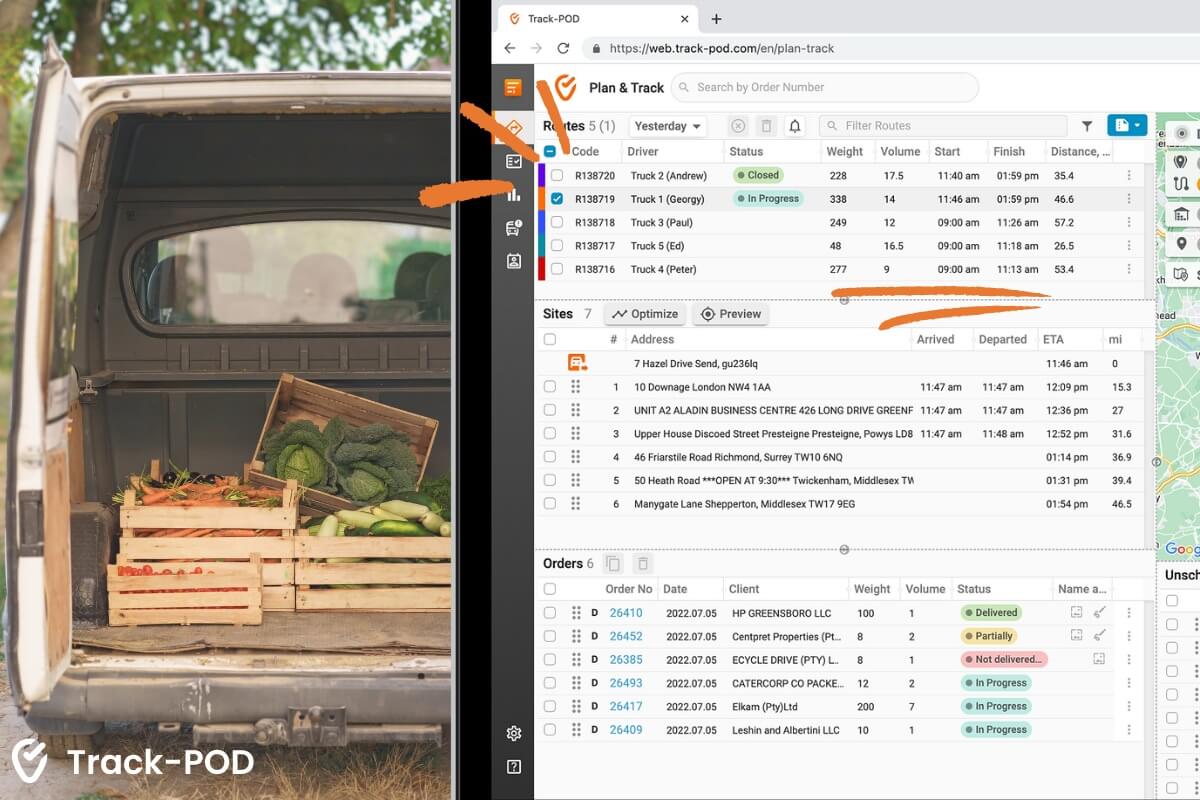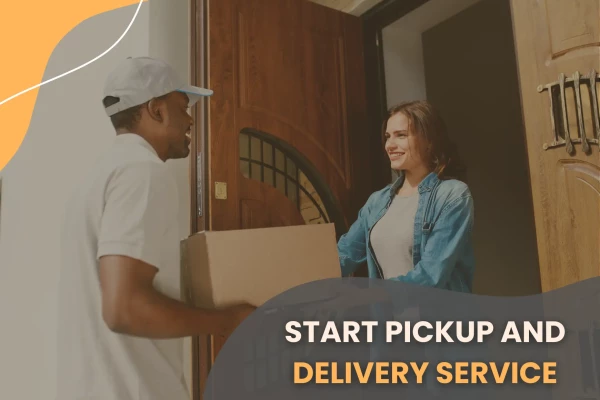Improving Agricultural Logistics with Transportation Logistics Software [UPD 2023]

by
Alina Kostukova
July 21, 2023
Managing logistics in the agricultural sector is a unique challenge.
If you’ve ever organized agricultural logistics, you understand the importance of working with tight timeframes and a high level of flexibility. The logistics supply chain in agriculture is constantly changing, and you have to adapt to it.
It is vital in a demanding industry like agriculture that the logistics network can keep up. There is little room for error here, so systems need to be as efficient as possible.
This is why it's crucial to use the right transportation management software. We will discuss the importance of such software in agriculture logistics and the criteria for selecting the best solution.
Understanding agriculture logistics
The complex nature of agricultural logistics can only be grasped by looking at the industry as a whole.
The agricultural sector has one of the most extensive supply chain systems.
A typical agricultural supply chain will involve three main steps.
-
Moving produce from the farmers to the intermediate silos.
-
Moving produce from the silos to the transportation plants.
-
Moving produce from the transportation plants to the end client.
In each of these different steps, multiple decisions need to be made. And with each decision that needs to be made, numerous possible outcomes exist.
Planning an efficient agricultural supply chain requires a strong understanding of the crops and the possibilities that could result from each action.
Transportation logistics management needs thoroughly evaluate every step and make the best judgments depending on every scenario.
This means that logistics managers need to be flexible and able to figure out the best way to handle logistics as quickly and efficiently as possible. This is why having the right transportation logistics management software is so important.
Why agribusiness logistics matters
Agricultural logistics poses unique challenges, which we will explore later.
Firstly, it’s essential to understand that agriculture logistics relies on both inbound and outbound shipments.
For example, farmers need inbound shipments of seeds and fertilizers. They then produce the final crop, transported in an outbound shipment. Both shipments rely on one another, and both need to be optimized for success.
Agricultural goods are also incredibly delicate. Fresh crops have a limited shelf life and must be stored and managed very specifically.
Any damaged crops or produce during transportation could significantly impact the overall agricultural supply chain.
When dealing with perishable produce like this, each area of the supply chain must be handled carefully.
The parties involved include farmers/producers, manufacturers, retailers, and transportation companies. Every position has a certain amount of duty, and each role affects the next.
Careful agriculture logistics management is vital for a consistent and predictable supply chain.
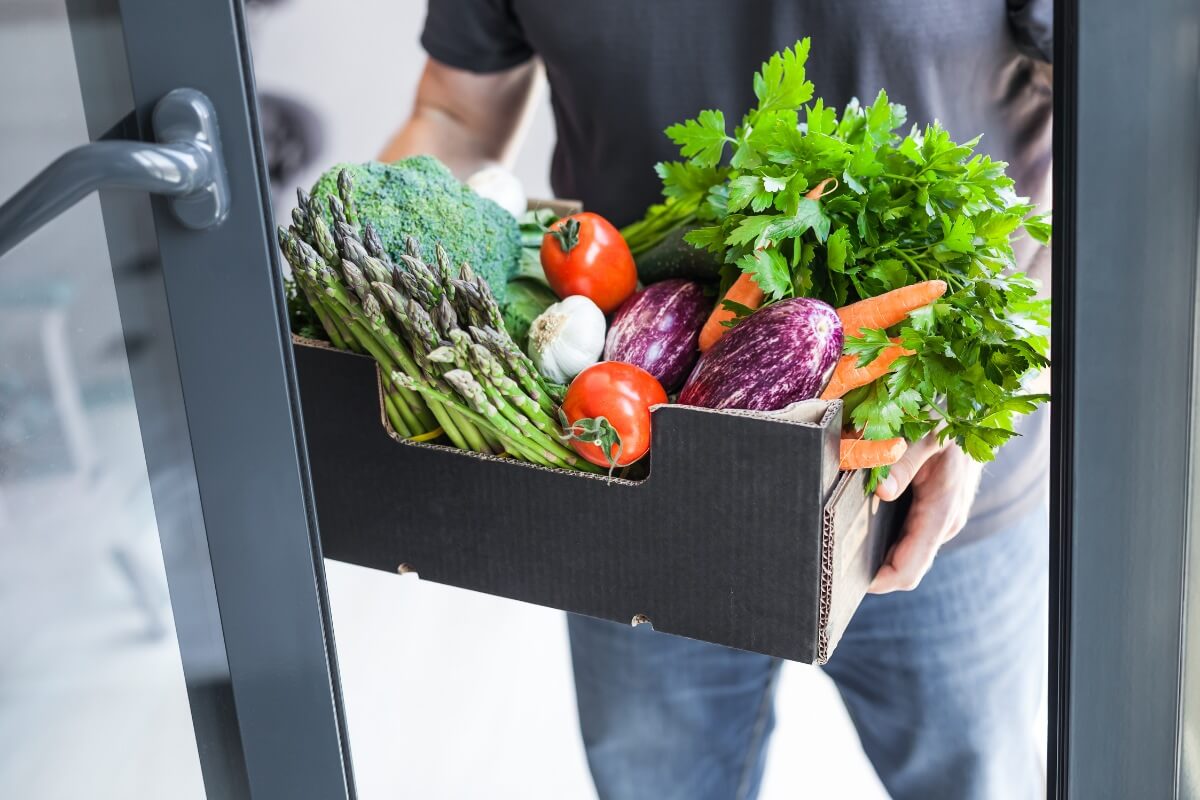
Beyond this, there are many regulations involved in agriculture logistics.
This includes regulations around food safety, fertilizers that could be hazardous, and more. These add further complexity to managing agricultural logistics and supply chains.
The bottom line is that agriculture logistics involves more moving parts and processes than other supply chains.
Logistics managers need to be able to respond to challenges quickly and always maintain a high standard throughout the agriculture supply chain.
You need to use the right agricultural supply chain tools for deliveries and other operations to achieve this. Dealing with these processes manually could be impossible to keep up with.
We’ll explore how to find the best agriculture logistics software in more detail.
Agriculture logistics challenges
To improve agriculture logistics with transportation software, it’s vital first to understand the different challenges that exist.
Below are some of the main challenges in agricultural logistics.
1. Visibility
Whether for inbound or outbound logistics, maintaining visibility is one of the critical challenges.
Accurate ETAs and live tracking with status updates are essential for an efficient supply chain.
Whether we apply this to self-delivery, carriers, 3PLs, or shippers, clear visibility across the logistics process is vital.
Everyone involved needs to clearly understand the delivery status and where each party involved in the supply chain is. Without this, a complex logistics chain could turn into a nightmare.
You can finally end the problem of idling with the help of advanced real-time driver statuses in Track-POD Web 2.0. A vehicle's pin will change color to reflect the idling status.
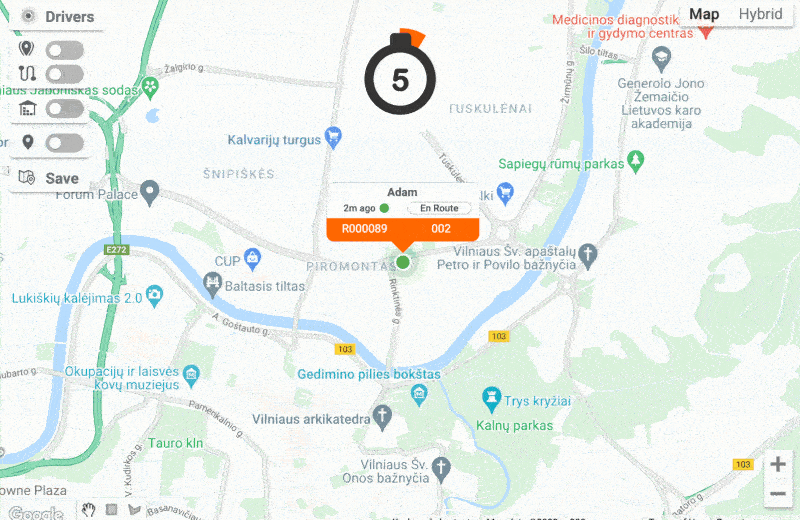
2. Communication
Communication in agricultural logistics is closely linked to visibility.
This could be communication between truckers and managers or communication at the different stages of the supply chain.
Whatever the case, ensuring all parties are consistently updated and kept in the loop is essential.
Without clear communication, managing logistics can become a severe challenge.
3. Compliance
We have already touched on the challenging regulations around the agriculture supply chain.
Ensuring compliance is integral to managing farm transportation because it involves handling fragile and perishable goods.
This includes compliance around the agricultural products being transported and compliance related to the actual transportation process.
Logistics managers must ensure that every route, vehicle, and shipment is fully compliant.
There are many considerations here, and keeping up with many shipments and delivery routes can be challenging. Managing agricultural compliance in transportation is incredibly difficult when routes become international.
4. Transportation
Of course, the final challenge comes down to actual agricultural transport management.
Managing logistics is difficult in any industry, especially with as many considerations as agriculture.
Agricultural transport routes can be a challenge. This can make route planning and optimizing each delivery route difficult.
Then there is also the management of the vehicles, managing the drivers, and making sure that all shipments are on track.
Agricultural logistics generally involves long-distance deliveries in areas that are often remote.
To manage this effectively, it’s crucial to have a clear and accurate system for staying up-to-date with any potential transportation challenges.
Using agriculture logistics software
These challenges can be easily solved with the right agriculture logistics software.
The best agribusiness software should offer the following possibilities to help address and manage the discussed challenges.
Routing & optimization
One of the most significant benefits of agriculture logistics software is more intelligent route planning.
Routing software can be used to solve various agriculture logistics challenges.
With the right route optimization software, you can automatically adjust and plan routes.
Not only does this save time, but it helps you make sure that each vehicle is on the smartest and most efficient route possible. This is important for keeping up with the complicated supply chain in agriculture.
Agriculture logistics software can help logistics farmers make decisions in no time. If there are changes to be made to the routes, the software can do this right away. It also makes sure that all vehicles are loaded to capacity.
If you are dealing with complex delivery routes, using route planning software is a lifesaver.
Track-POD has a responsive map that gives more control for efficient route planning. Use the drag-and-drop interface and bulk selection tools for extra precision.
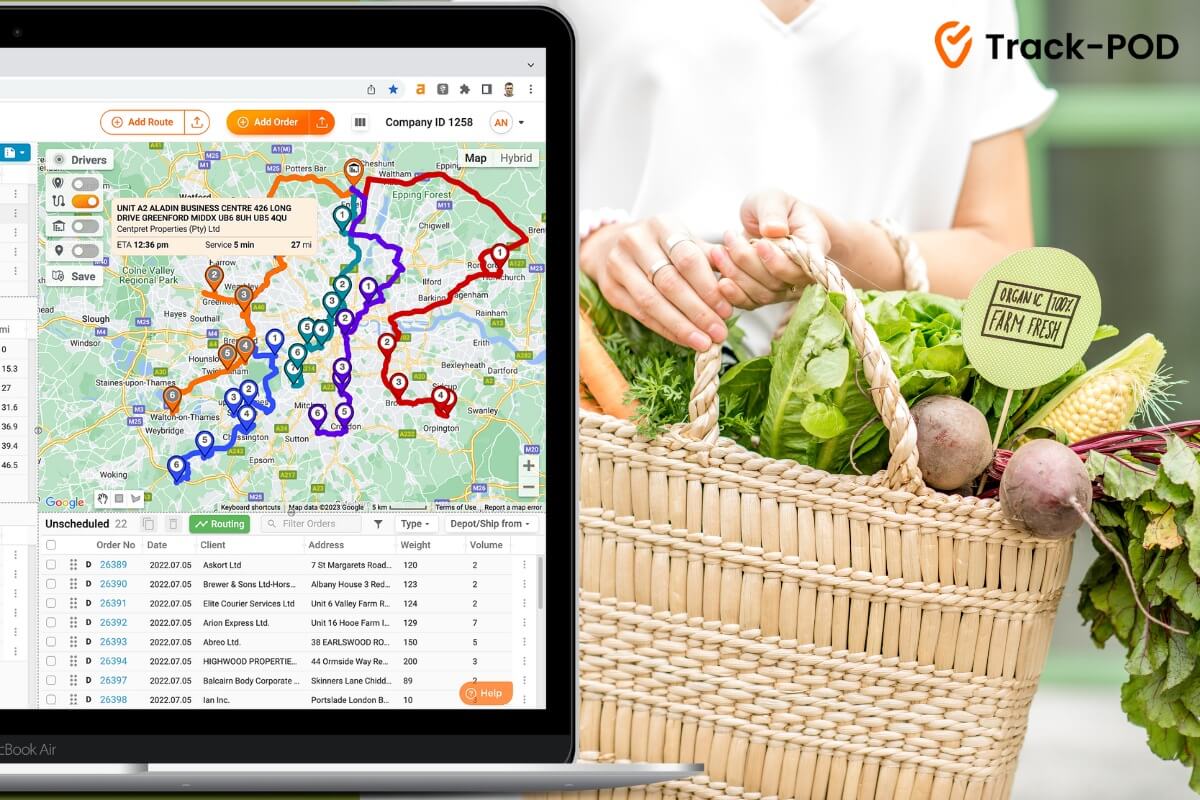
Communication
Communication can be vastly enhanced with the right agriculture logistics software.
As mentioned, this is one of the main challenges associated with agricultural logistics.
Transportation software improves visibility and communication between logistics managers and truckers.
This can be achieved through accurate vehicle tracking and instant shipping notifications. These features ensure that the delivery status is always up to date and accessible by all parties.
Instead of calling and asking for updates, location tracking can be done instantly through the software.
For example, if a trucker changes the sequence of stops in a route, it can be instantly reflected in the web dispatcher dashboard.
GPS tracking
GPS tracking capabilities are essential for improving agriculture logistics.
GPS tracking helps improve visibility, communication, and transportation management.
It also helps ensure that every party involved is on the same page and that freight can be easily tracked.
This plays a vital role across the entire agriculture logistics chain, and it helps everyone to stay up-to-date and on track with the delivery.
Fleet maintenance
Maintenance of vehicles is essential for any kind of transportation logistics. Vehicles are some of the most expensive assets of any logistics operation, so they must always be kept in top shape.
Trucks must remain in good working order to reduce costs, like fuel expenses and repairs.
The right transportation management software offers a solution to this.
Safety checks, maintenance, and inspections can be enhanced through the software, which saves a great deal of money in the long run.
Having your fleet data available through a single platform will make agriculture logistics easier.
Freight management
We mentioned how difficult it can be to carry delicate and perishable crops in agricultural logistics. Using the right software can help make this process easier.
The right delivery management system will be able to assign suitable cargo to the right vehicle.
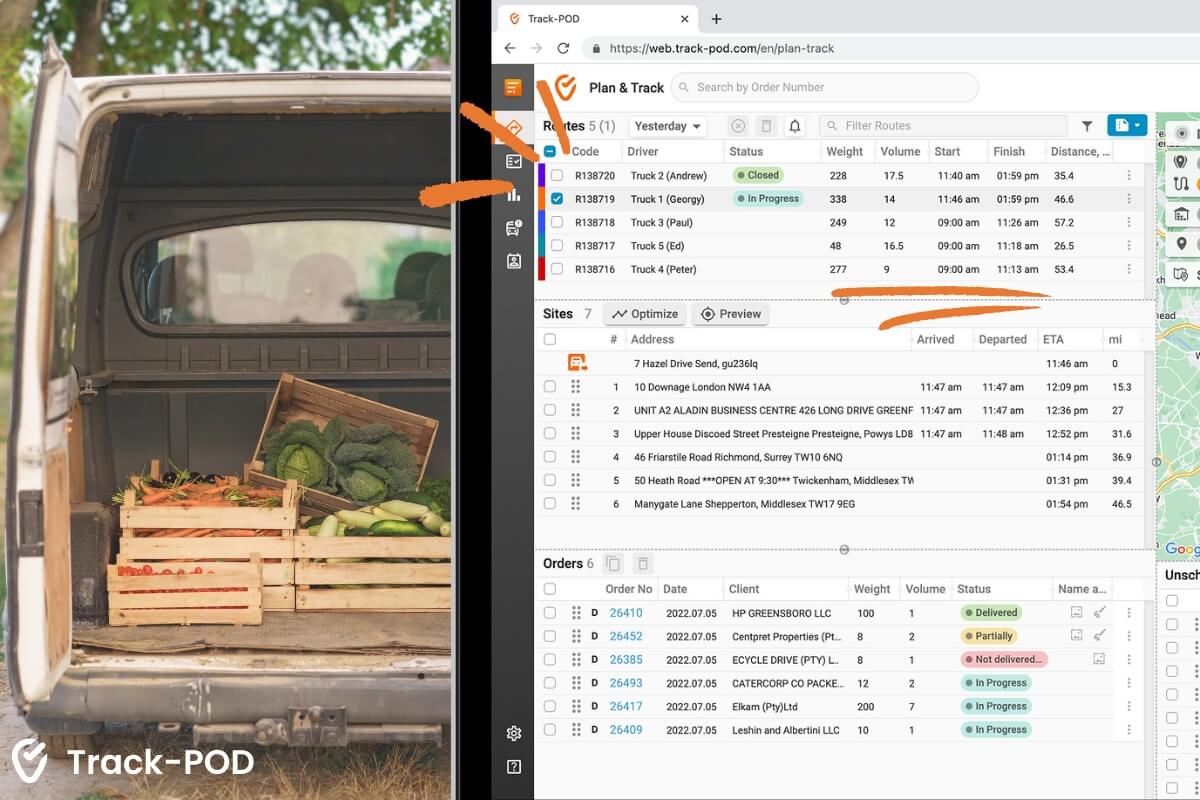
All special considerations will be taken into account, such as the weight and volume of the cargo, the limitations and type of the vehicle, and so on. So, the cargo will automatically be assigned to the suitable vehicle.
Many factors are involved in managing deliveries and assigning goods to the right vehicle.
A built-for-purpose logistics software solution will go a long way in refining this process. This will help add value for each actor in the overall supply chain.
Other benefits of using transportation logistics software in the agriculture industry
Transportation logistics software is essential for improving agricultural logistics.
It doesn’t only help solve the main challenges faced in this industry but can also add many advantages to logistics management.
We’ve outlined some of the main ones below.
Saves money
The right transportation logistics software helps make all kinds of processes far more efficient. This allows logistics companies to get more out of their transportation networks, which saves money.
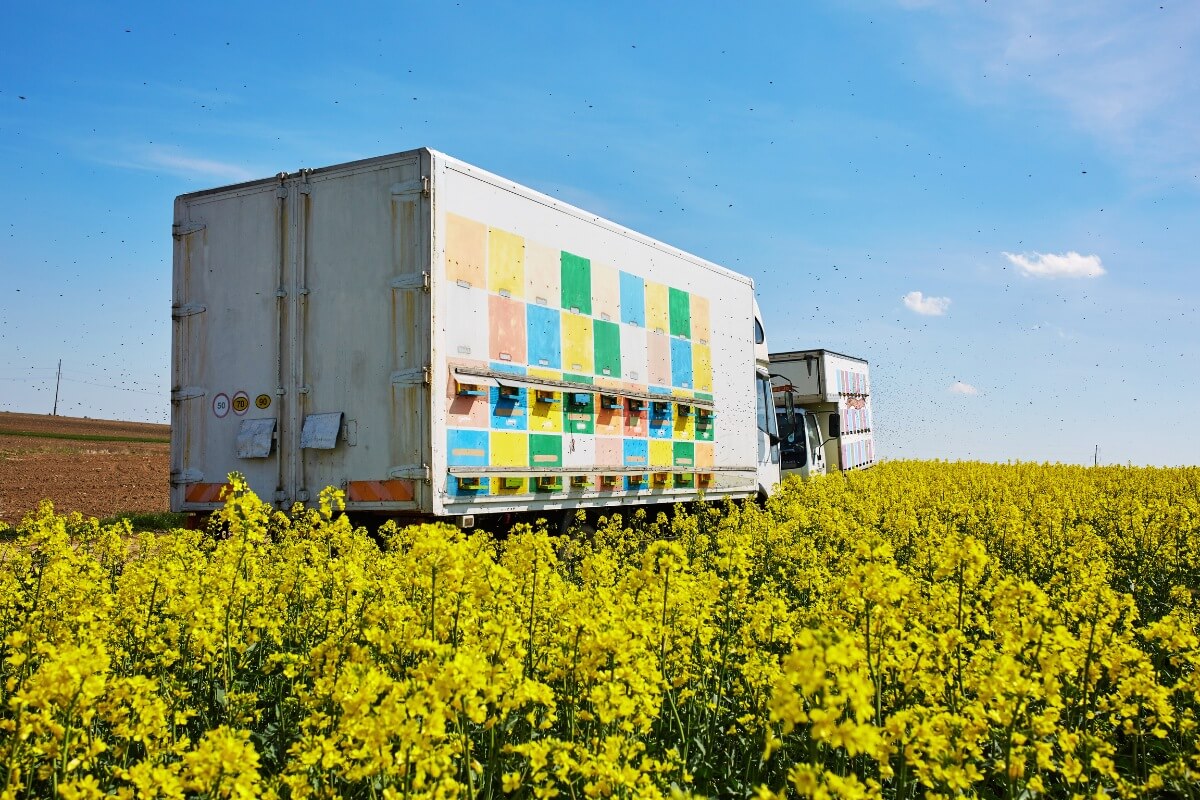
Saves time
Transportation logistics automates various processes and handles complicated administrative tasks. This will save agricultural logistics managers loads of time and effort.
In Track-POD We 2.0, users can swiftly add orders or change settings and know that all sub-users will see the changes right away.
Saves fuel
With smarter routing options and route optimizations, the software can help improve fuel management.
This is also achieved by assigning the right cargo to the right vehicle and maintaining the fleet well-managed.
Helps customers
Transportation software isn’t only for logistics managers and delivery drivers.
It can also improve the customer experience in a big way.
The right transportation logistics software helps your business become more customer-centric and adds value to the client’s journey.
This is particularly important in agricultural logistics, where various people can be involved in the supply chain, each requiring fast and efficient service.
Conclusion
Agricultural logistics can be a tough nut to crack.
With so much happening in an agricultural supply chain, staying on top of all processes can be a particularly challenging job for logistics managers.
This is why the right transportation logistics software is necessary.
The software can make a wide range of processes easier to manage and more efficient to operate.
This is essential for keeping agricultural logistics transparent and on track – things that are incredibly important for an industry with such a complex supply chain.
Book a custom demo to learn more about last mile optimization with Track-POD.
- Transportation management
About The Author
Alina Kostukova
Skilled marketing content creator with a background in digital media and public relations. Focused on creating first-rate text and visual content that stands out and tells compelling stories.

